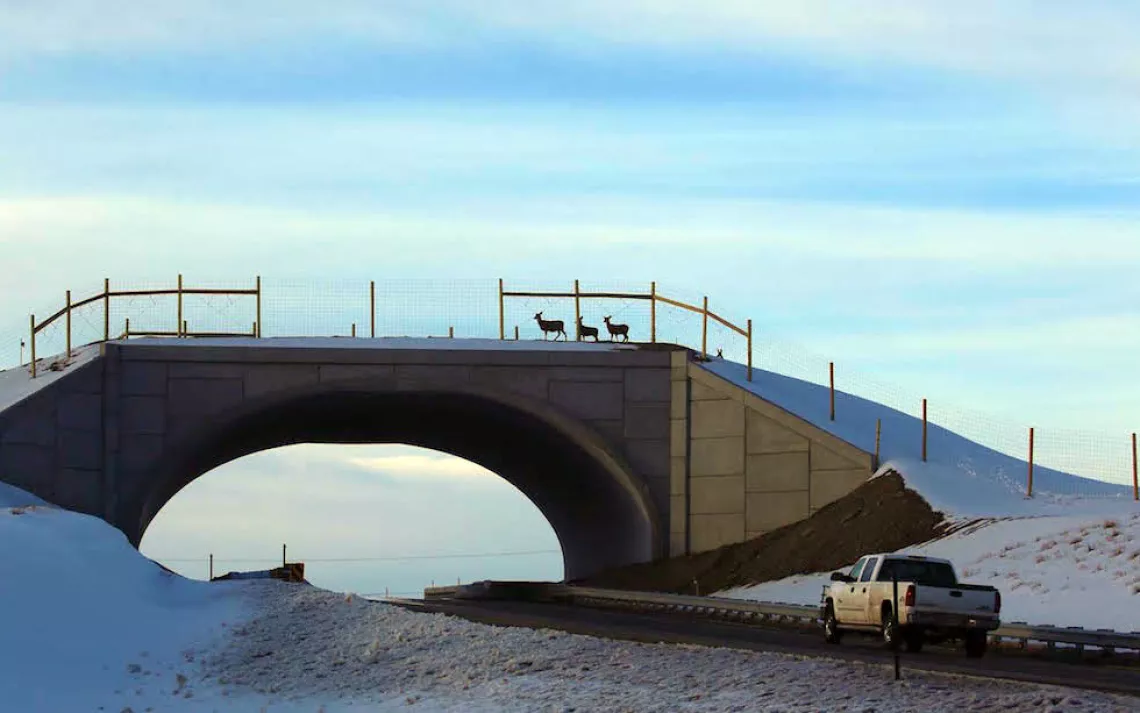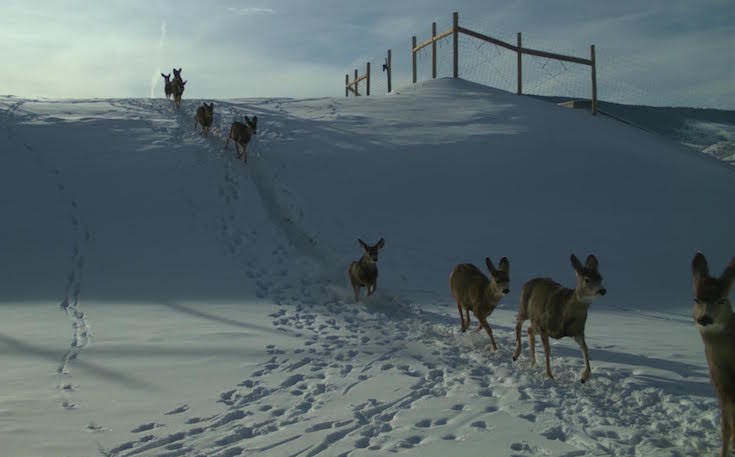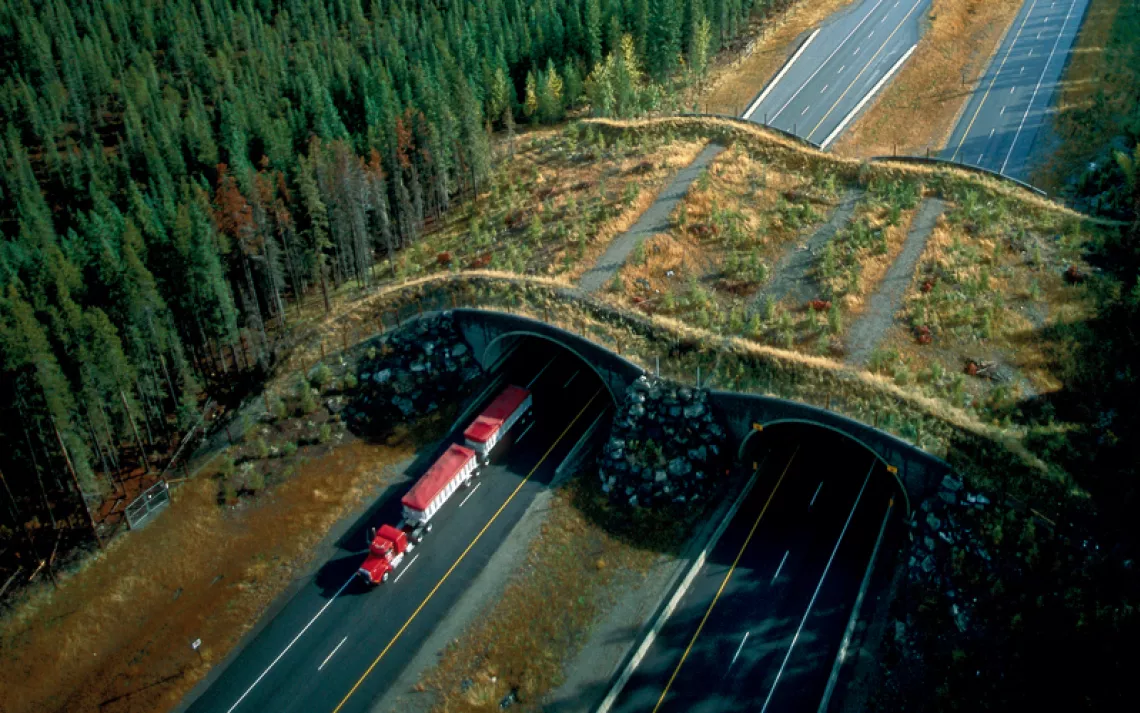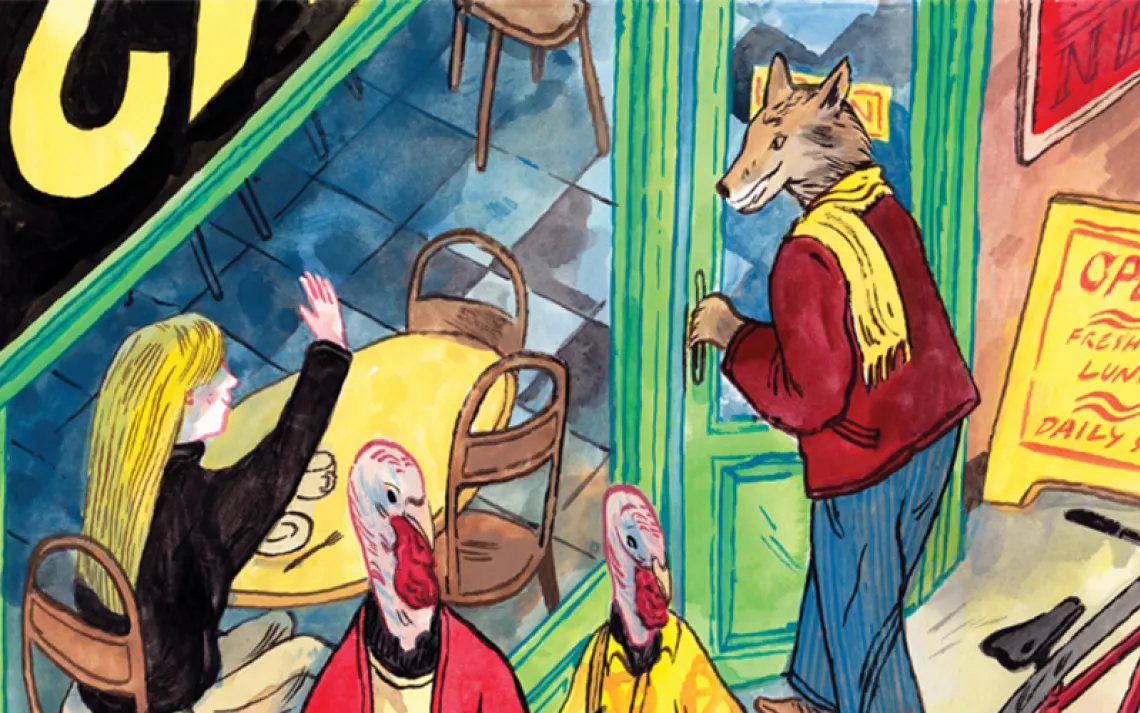If You Build It, They Will Come
The case for critter corridors

Photograph courtesy of Josh Richert/Blue Valley Ranch
Snowy probably never knew what hit him. Last month, a motorist in Grand Teton National Park killed the lone cub of the internet-famous Grizzly 399 as the pair crossed the road at Pilgrim Creek—a popular spot for wildlife watching. In the last 20 years, Grizzly 399 has become one of the most photographed bears in the world, due to her penchant for hanging out along a busy roadside; she had found that it was a safe haven to raise her cubs away from aggressive male grizzlies and wolf packs. Wildlife lovers were distraught at the news that her cub, dubbed “Snowy” due to his blonde facial fur, died in what park officials are calling a hit-and-run.
If the news was awful, it was also ordinary. Each year, at least 1 million animals in the United States are killed by automobiles. The actual number is likely many times greater than that, as drivers rarely report deadly collisions with smaller animals such as skunks, raccoons, and squirrels.
Biologists say that human civilization’s ever-expanding network of roads—along with increased traffic—represent one of the greatest threats to maintaining healthy and robust wildlife populations. Many species of wildlife need space to roam in order to find food and locate mates. But our highways and interstates present dangerous, if not insurmountable, obstacles to wildlife migration, leaving some populations of animals isolated in pockets of wildlands. Such isolation reduces species’ genetic diversity, and can even contribute to localized extirpations.
“It’s an enormous problem, especially on high-traffic roads,” says Paul Beier, a professor in the School of Forestry at Northern Arizona University who has published widely on the issue of wildlife migration. “A low-traffic road is not a barrier to most animals, but for some animals, like pronghorn, it can be a complete barrier.”
Beier says that when many of our road networks—especially the interstate highway system—were planned 50 or 60 years ago, transportation officials didn’t consider the effects on wildlife migration. Since then, conservation biologists have developed a deeper understanding of wildlife connectivity, leading to a push, belated though it may be, to retrofit roads with underpasses or overpasses for critters to cross. “Basically, to make sure these wildlife populations survive, we need to make sure they are connected with safe corridors,” Beier says.
This isn’t rocket science. As prosaic as it may sound, something as simple as a bridge over a road can be vital for ensuring that wildlife is able to thrive.

Photograph courtesy of the Colorado Department of Transportation
State transportation agencies are finally getting the message. In Montana, the transportation department has worked with the Confederated Salish and Kootenai Tribes to build bridges and underpasses on US 93. When the Arizona Department of Transportation expanded State Route 260 between Phoenix and the Mogollon Rim community of Payson, it created several underpasses for wildlife. In Los Angeles, officials are considering building a 165-foot-wide landscaped bridge over the jam-packed 101 freeway to reconnect the Santa Monica Mountains and the Santa Susana Mountains. The proposed overpass would link together Southern California’s population of mountain lions, which have made a remarkable comeback in the last 20 years.
Critter corridors have been wildly successful. Last December, Colorado completed its first wildlife bridge over Highway 9, north of Silverthorne. In just six months, wildlife mortalities on the highway dropped by 92 percent. “They [the wildlife] took to it immediately,” says Michelle Cowardin, a biologist with Colorado Parks and Wildlife who worked on the project. “Already on the overpass we have seen moose, elk, and deer, and then fox and coyotes.”
NAU’s Beier says that, thanks to underpasses, wildlife mortalities on the Payson-Phoenix route have also been reduced by about 90 percent; the total number of animals crossing the highway has grown at least threefold. “The animals are moving across this four-lane highway better than they were moving across a two-lane road,” he says. “They figure it out. There must be some kind of social learning that we don’t understand.”
Indeed, biologists have observed some surprising behavior. Wildlife specialists figured that prey species—especially bighorn sheep and pronghorn—would avoid underpasses and prefer bridges; an underpass, after all, feels too much like a cave, like a lion’s den. But in Colorado, Cowardin’s team has spotted a bighorn ewe picking its way through an underpass.
If straightforward infrastructure retrofits could dramatically boost wildlife populations, why don’t we have more of them? In a word: money. The bridge over LA’s 101 freeway is forecast to cost $50 million. The 21 miles of fencing, five underpasses, and two ovepasses on Colorado’s Highway 9 cost the state about $10 million, nearly half of which was paid with a donation from a New York hedge fund billionaire who owns the local Blue Valley Ranch.
That’s chump change, Beier points out, compared to the billions of dollars spent annually for road construction and improvements. It’s the equivalent, he says, “of a $20,000 new roof on a $1 million home.” And, in any case, the price is worth it. “Well, to me, there’s a lot of value in keeping those wildlife populations healthy and allowing for recolonization. It’s our wild heritage, and we want to keep it.”
 The Magazine of The Sierra Club
The Magazine of The Sierra Club







